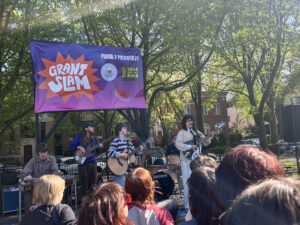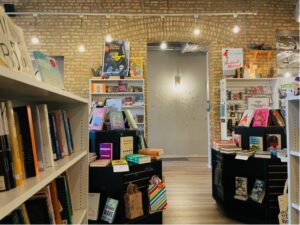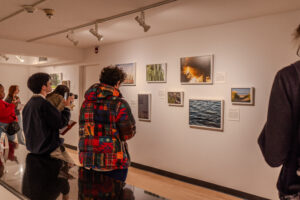This Valentine’s Day, Chicagoans were out and about during the first major consumer holiday of the year, celebrating with the rest of the Western world.
“It’s February and typically during the week February can be very slow, but because of Valentine’s Day, we were able to seat a lot of numbers. The influx is mainly couples. It’s always a special day for a restaurant,” said Tim Anderson, 32, assistant general manager from the Bellemore restaurant, located in the West loop, a new Chicago spot owned by the premier chef-driven Boka Restaurant Group ― spending a total of $4.5 billion.
“Volume increases, the turnover increases because people want to hang out. It’s a good night for people to create memories,” Anderson said.
Chicago’s touristic hotspots become romantic hotspots on Valentine’s Day. Chicago Time Out listed Maggie Daley park as one of the top five most romantic spots to visit for the holiday. The park’s skating ribbon located in the Millennium Park area attracts hundreds of couples to the spot and its many neighboring touristic landmarks, including the Cloud Gate Sculpture, also known as “the bean,” and the Millennium Park ice rink.
“We just wanted to hang out in Chicago,” Gabriella Ceron, a 21-year-old, Bloomington native. Ceron took a Valentine’s day trip to “The Bean” with her boyfriend Ronaldo Diaz, 20, also of Bloomington.
“There is not a lot of dates that we do different just because its Valentine’s day, this is what we like to do [hang out in the city] ,”Diaz said.
Annual estimates by the National Retail Federation cite a whopping $19.6 billion expected to be spent for the holiday this year, with $4.7 billion expected to come from sales in jewelry. The holiday notoriously attracts consumers to the restaurant and jewelry business and is, next to Christmas, the biggest holiday for jewelry companies in the nation, said Madison Monteiro, 24, consumer analyst for The Nielsen Company, based in Chicago.

Let’s compare Valentine’s Day to St. Patrick’s Day, nobody feels obligated to buy things on St. Patrick’s Day. Jewelry companies market heavily during Valentine’s day; this just goes back to American culture. You see it on TV or in movies when the guy gets the girl a pretty necklace as a token of love. Jewelry is supposed to signify a bond or relationship,” Monteiro said.
Anti-Valentine’s day consumer trends in the city due to the holiday’s inclination to celebrate coupledom and romance also contribute to consumerism during the holiday. According to data from the Census Bureau, there are 105 million unmarried people in the U.S. The NRF predicts that in 2018, 11.5 percent of non-celebrants will treat themselves to something special, 9.8 percent plan to get together with family and friends, while another 3.3 percent will purchase anti-Valentine’s day gifts.
“I believe in self-love and friends; I don’t think it should just be for couples. Love doesn’t always have to be ‘couple’ love and today is about love, ” said Nifemi Akande, 17, a student at Harold Washington College who said she bought her best friend a phone case for Valentine’s Day.
Among the ‘anti-Valentiners’ are couples who want to break out of the holiday’s traditions of love.
“I got her one rose, that’s it. Valentine’s Day is a trend and that is all it is, but I think it depends on people, couples and what their values are,” said Devin Roberts , 25, of Chicago, who was celebrating Valentine’s day with girlfriend and partner Ashley Minefee, 25, also of Chicago, at the Millennium Park ice rink. “There is a lot of pressure. If you don’t plan anything, then your maiden is looking at you like, ‘what about me?’,” Minefee said.
“Valentine’s day is more of a couple-centric holiday; it’s polarizing because it can sometimes leave out those people who are not in relationships,” Monteiro said.












Be First to Comment